Microbial Gene regulation
1/27
There's no tags or description
Looks like no tags are added yet.
Name | Mastery | Learn | Test | Matching | Spaced |
|---|
No study sessions yet.
28 Terms
Why is induction and repression of gene expression important?
efficiency, only make whats needed
respond to environment changes (diff carbon/nitrogen sources, different competition, host factors, etc.)
synthesis is energy intense, only make whats needed to save energy
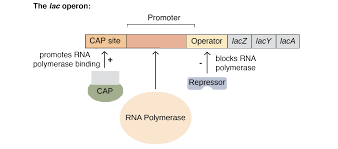
What is an operon?
cluster of genes under the control of a single promoter
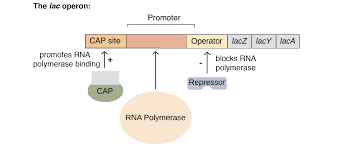
What are the transcriptional control regions?
operators - binding site for repressor proteins to bind and inhibit transcription and shut down downstream genes
activators - binding site for activator proteins, activates transcription

What are operators?
binding sites for repressor proteins, located right after promoter
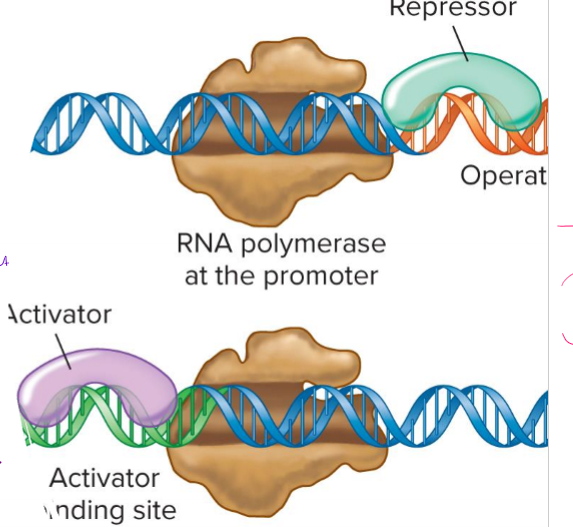
What are activators (not activator proteins)?
binding sites for activator proteins, activate transcription, located before promoter
What does it mean for gene regions to be constitutively active?
no activation/repression, always on. for normal-functioning genes like ribosome encoding
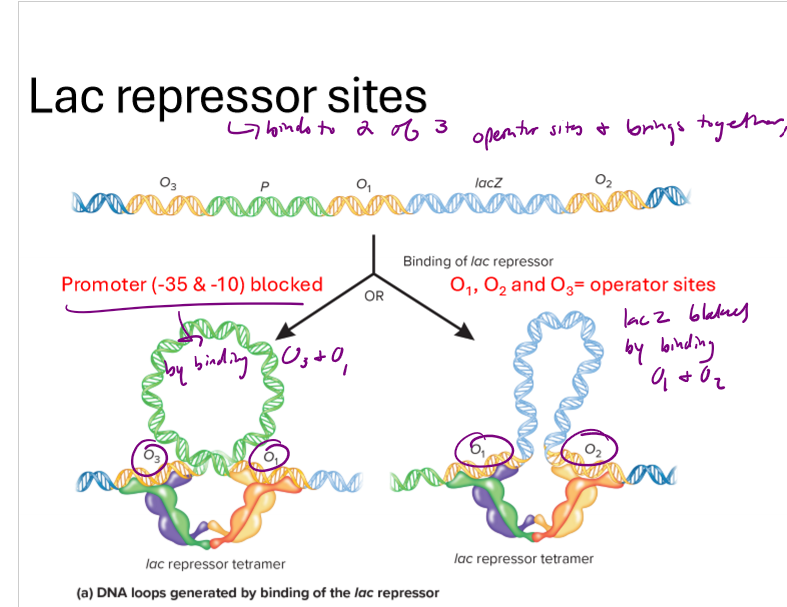
Describe the lac operon including:
genes involved and what they encode for, including regulator genes
lactose metabolism proteins/sugars
how lac repressor proteins work
role of CAP and cAMP
lacZ (beta-galactosidase), lacY (lactose permease), lacA (beta-galactoside transacetylase), lacI (encodes for repessor)
Beta- galactosidase, breaks lactose down into galactose and glucose
lactose permease - brings lactose in the cell
allolactose - inducer produced from glucose, senses lactose has entered the cell, represses the repressor protein so lac operon can run
lac repressor binds to 2 of 3 operator sites and brings them together, closing down transcription by blocking promoter or lacZ site
high cAMP levels allows CAP (catabolite activation protein) to bind to CAP binding site to induce transcription of lac operon

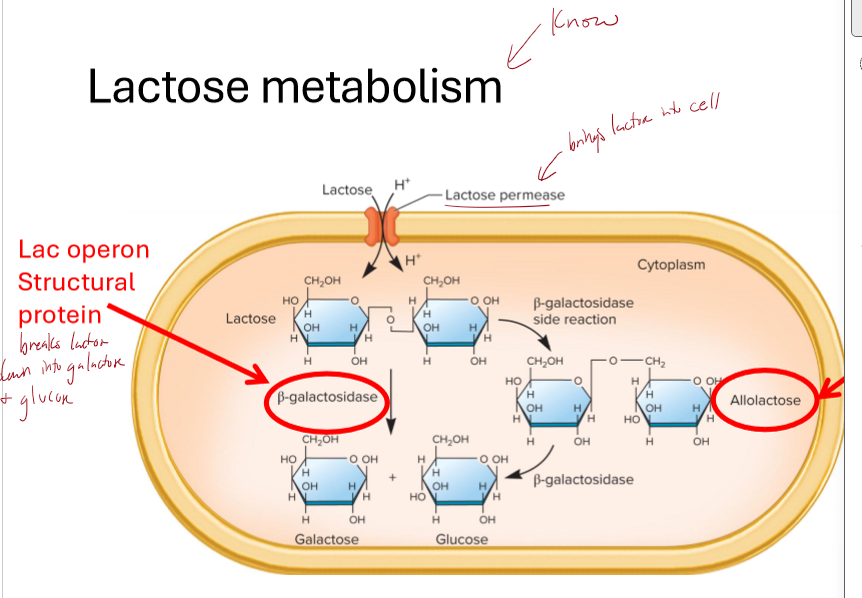
What is the role of beta-galactosidase, lactose permease, and allolactose in lactose metabolism?
Beta- galactosidase, breaks lactose down into galactose and glucose
lactose permease - brings lactose in the cell
allolactose - inducer produced from glucose, senses lactose has entered the cell, represses the repressor protein so lac operon can run

When should the lac operon be turned off and on?
off: presence of glucose, even if lactose present (preferred carbon source)
on: presence of lactose and absence of glucose

Describe lac operon repression and regulation
repressor proteins bind to 2 of 3 operator sites on lac operon and bring them together, forming a tetramer structure that blocks access to the promoter or genes
when lactose is present and glucose is absent, allolactose represses the repressor and prevents it from binding to the operator
if cAMP is high, CAP protein binds to CAP binding site and induces transcription of lac operon

What is a promoter?
specific DNA sequence located upstream (before) a gene or operon that serves as the binding site for RNA polymerase to initiate transcription
when is cAMP high and what does this indicate/cause?
high cAMP when low glucose/ATP - CAP can bind and induce lac operon
low cAMP when high glucose/ATP - CAP can’t bind and induce lac operon
What do CAP and cAMP do?
induce lac operon
CAP (catabolite activation protein) binds to CAP binding site to induce transctiption of RNA polyermase
CAP requires high cAMP levels to bind to promoter
high cAMP levels when glucose/ATP is low
Describe what the repressor, CAP, and cAMP are doing in the following scenarios:
lactose but not glucose present
lactose and glucose present
no lactose or glucose
glucose but no lactose
high cAMP bidns to CAP, repressor inactive, lac operon transcribed
low cAMP, CAP inactive, repressor inactive due to allolactose; no transctiption because no CAP
high cAMP, CAP active, but repressor active; no transctiption of lac operon becaues of repressor
low cAMP, CAP inactive, repressor active; no transcription
What protein involved in the lac operon is constitutively made?
lac repressor

Describe the synthesis of tryptophan
trpR repressor inactive without tryptophan present- no tryptophan, gene is being expressed (only want synthesis of tryptophan when low/no tryptophan)
When tryptophan is present, it binds to the repressor protein —> activates repressor, which binds to operator and blocks transcription
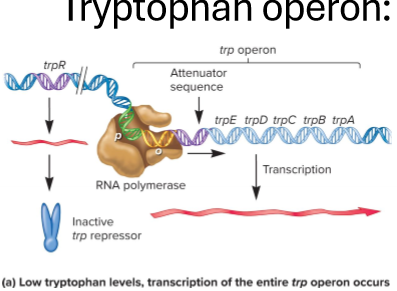
Describe the activity of the TrpR (repressor) when tryptophan levels are high and low
high tryptophan: TrpR repressor synthesized, binds to repressor, activating repressor and blocking transcription
low tryprophan: TrpR being syntheiszed, active gene expression
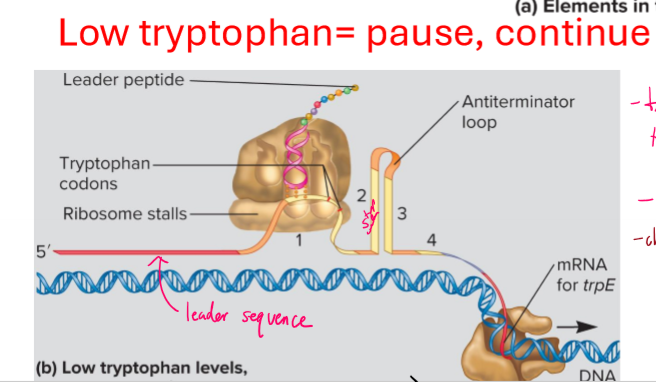
What is attenuation?
mechanism where RNA polymerase terminates in the leader sequence of mRNA (before transcription starts), caused by mRNA folding
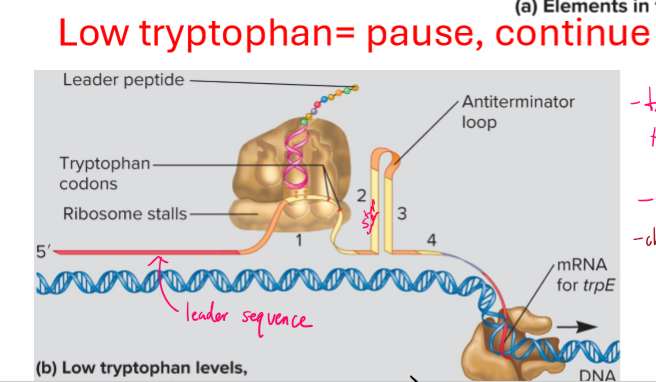

Describe attenuation of tryptophan
low tryptophan - mRNA pauses, waiting for amino acid/tRNA to arrive; pause forms antiterminator loop to form and ribosome forms protein
high tryptophan - mRNA doesnt pause, forming transcription terminator loop. ribosome stops making proteins
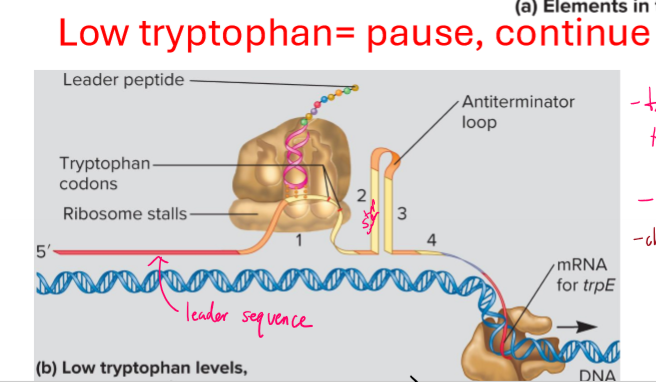
What is the two component signal (regulatory) system?
response to environemntal stimuli
1. sensory kinase detects changes in the environment and phosphorylates response regulator (requires ATP)
2. Response regulator modifies expression
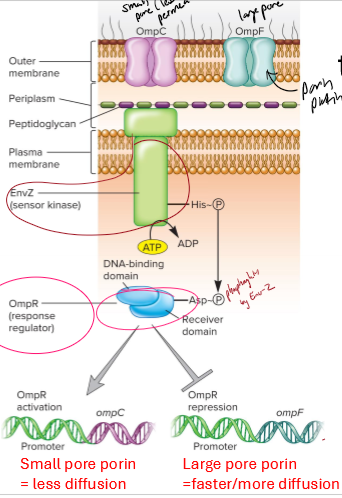
Describe the 2 component transduction (regulatory) system for osmolarity
sensory kinase (envZ) - detects high osmolarity and phosphorylates response regulator (ompR), which requires ATP
OmpR modifies gene expression, repressing transcription of large pore porins (OmpR) and activating small pore porins (OmpC )
What is a response regulator and what is it used in?
modifies expression in response to environmental stimuli
phosphorylated by sensor kinase
used in two component signal system
What is a sensor kinase and what is it used in?
membrane spanning kinase that phosphorylates response regulator in response to environmental stimuli
used in two component signal system
What is CRISPR?
Clustered, Regularly Interspersed, Short, Palindromic Repeats (identical repeats)
Repeated DNA sequences interrupted by unique sequences from viruses the bacterium has previously encountered (the spacers are virus genomes)
adaptive immune defense against viruses/bacteriophage
How is CRISPR regulated?
Adaptation - Cas (crispr associated sequence) cuts viral genome post-infection and places in CRISPR spacer
Processing - CRISPR transcribed into multiple crRNA, each with a single spacer (virus genome) that matches a viral sequence
Interference - If tje same virus tries to attack it/offspring again, the crRNA guides a Cas proteinn to cut the matching viral DNA.

whats the difference between a promoter, an operator, and an activator sequence?
promoter is a DNA sequence where RNA polymerase binds to initiate transcription
operator is a DNA segment where a repressor protein binds, influencing whether or not transcription occurs
activator is a DNA segment where an activator protein binds
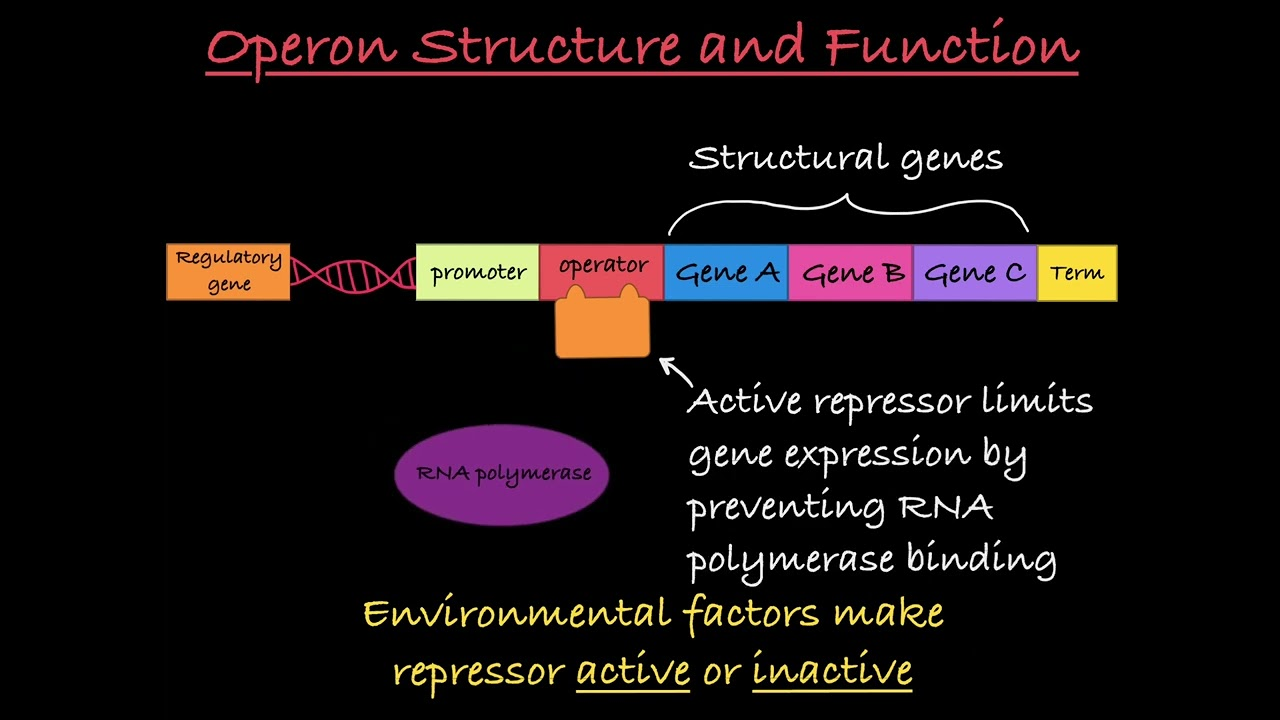
What type of metabolism is used in the lac operon, and what is the role of the metabolite?
catabolism (break down of energy)
inducer (lactose turns off repressor)
What type of metabolism is used in the tryp operon, and what is the role of the metabolite?
anabolic (build molecules)
repress (binds repressor to operator)